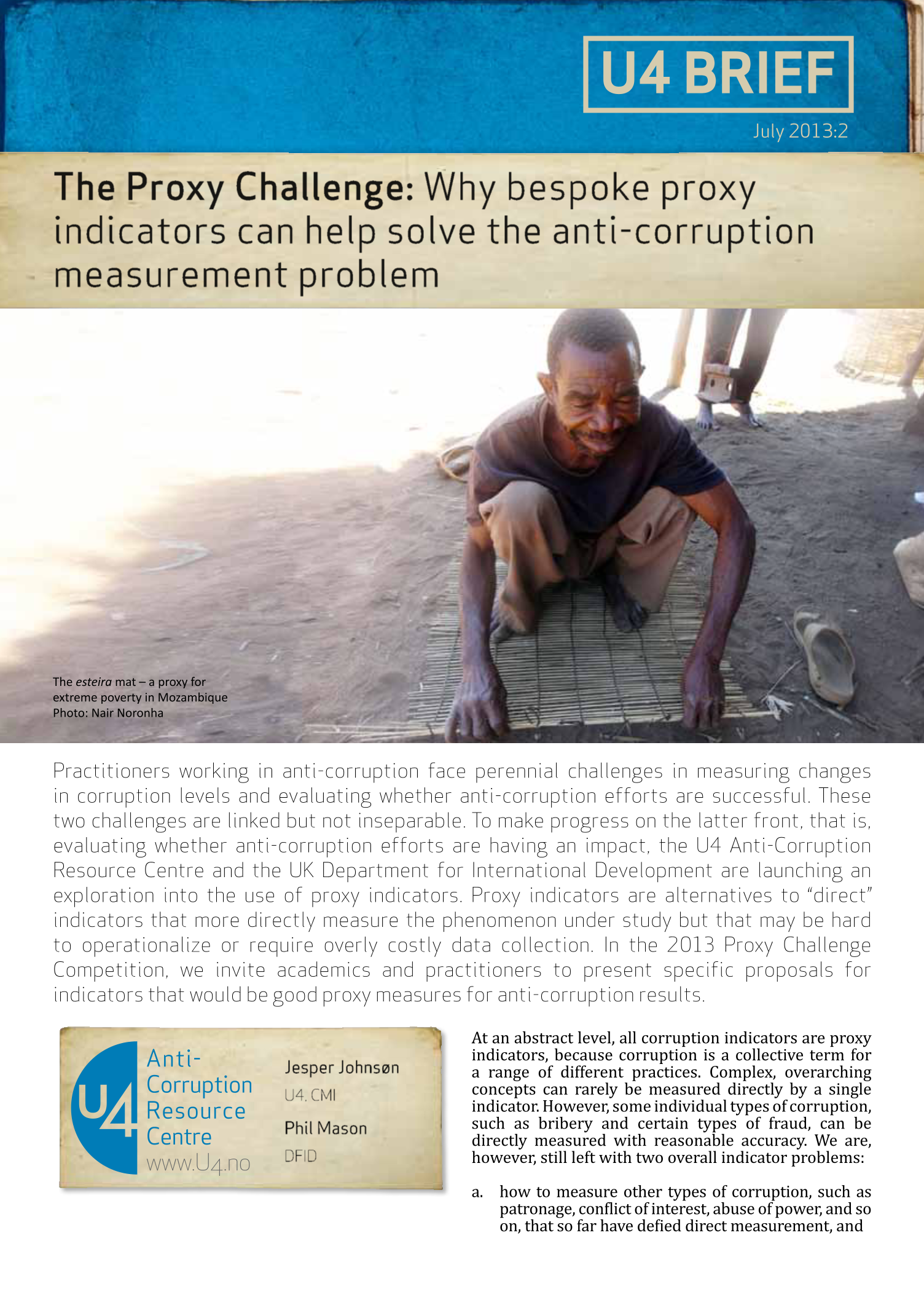U4 Brief
The Proxy Challenge: Why bespoke proxy indicators can help solve the anti-corruption measurement problem
Practitioners working in anti-corruption face perennial challenges in measuring changes in corruption levels and evaluating whether anti-corruption efforts are successful. These two challenges are linked but not inseparable. To make progress on the latter front, that is, evaluating whether anti-corruption efforts are having an impact, the U4 Anti-Corruption Resource Centre and the UK Department for International Development are launching an exploration into the use of proxy indicators. Proxy indicators are alternatives to “direct” indicators that more directly measure the phenomenon under study but that may be hard to operationalize or require overly costly data collection. In the 2013 Proxy Challenge Competition, we invite academics and practitioners to present specific proposals for indicators that would be good proxy measures for anti-corruption results.

Cite this publication
Mason OBE, P.; Johnsøn, J. 2013. The Proxy Challenge: Why bespoke proxy indicators can help solve the anti-corruption measurement problem. Bergen: Chr. Michelsen Institute (U4 Brief 2013:2) 6 p.
Disclaimer
All views in this text are the author(s)’, and may differ from the U4 partner agencies’ policies.
This work is licenced under a Creative Commons Attribution-NonCommercial-NoDerivatives 4.0 International licence (CC BY-NC-ND 4.0)


